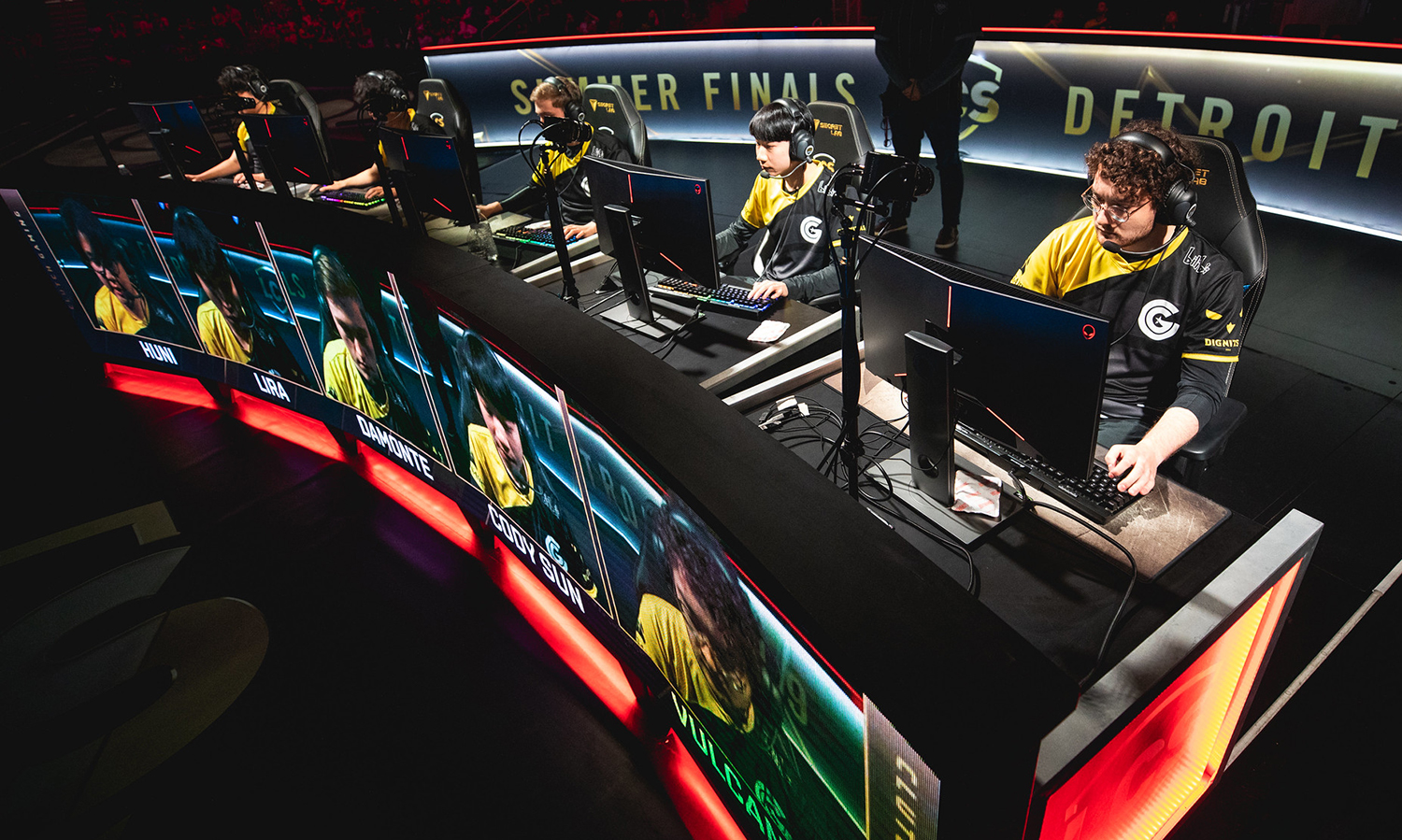Riot Games Descends on Little Caesars Arena for Blockbuster LCS Summer Finals Production
Riot produced the event out of a control room back home in L.A.
Story Highlights
Riot Games took over Little Caesars Arena in Detroit over the weekend for League of Legends Championship Series (LCS) Summer Finals, rolling out a production that featured plenty of Detroit flair at the recently opened state-of-the-art arena. Riot, a trailblazer in at-home–production workflows, leveraged a control room back home in Los Angeles to produce the live stream (on Twitch and LoLEsports YouTube channel). In addition, the LoL publisher used Little Caesars Arena’s massive center-hung videoboard, advanced projection-mapping system, and in-house production facilities to create a unique experience for fans in the arena and watching online.
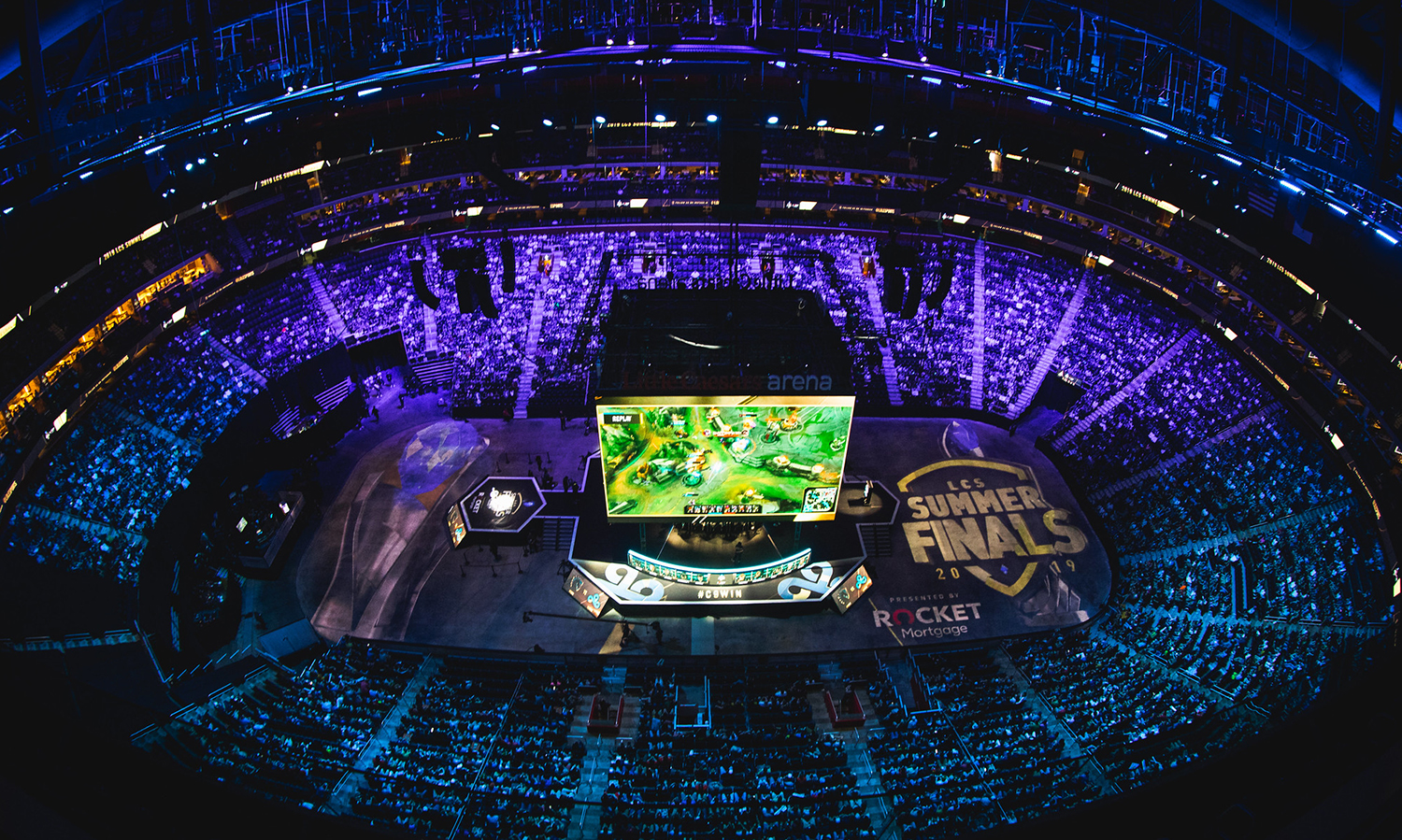
Riot Games took over Little Caesars Arena for the 2019 LCS Summer Finals. (Photo: Colin Young-Wolff/Riot Games)
“Little Caesars has been amazing to work with, and it has been great to work in a new state-of-the-art building like this,” says Seth Lloyd, operations lead, Riot Games. “We were able to get in the building, load in quickly, and use a lot of the equipment they have here already. The videoboard, the projection mapping, and the lighting really add to the show, and using their [facilities] has saved us a lot of time on the load-in. That gave us a lot more time to focus on the show itself and just make it better.”
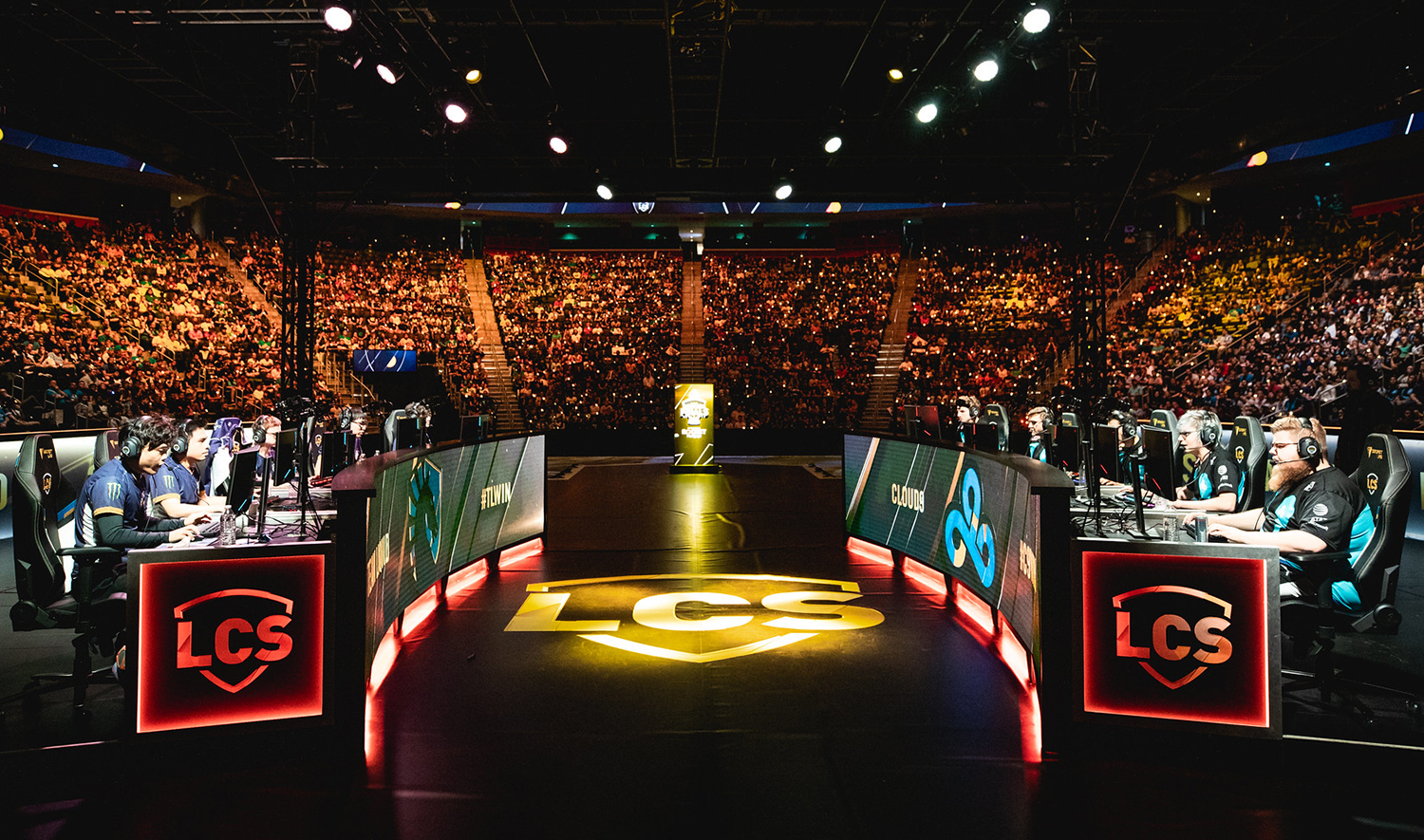
The LCS Summer Finals Stage in the center of Little Caesars Arena (Photo: Colin Young-Wolff/Riot Games)
The 2019 LCS Summer Finals began on Saturday with the Fan Event outside the arena and the 3rd Place Match followed by the Championship Match on Sunday, when Team Liquid rallied past Cloud9 in a five-game series to win an unprecedented fourth consecutive LCS title and close out the LCS Summer Split playoffs. With the win, Team Liquid took home $100,000 and qualified directly for the 2019 League of Legends World Championship in Europe this fall.
The In-Arena Experience: Little Caesars Offers Plenty of LED, Projection Toys
The main stage was located under the center-hung videoboard in an in-the-round configuration, with the desks of the two five-man teams facing one another. The arena’s 5,100-sq.-ft. videoboard system features four 28- x 43.5-ft. displays connected seamlessly to create a continuous, 360-degree video experience, as well as four 7.3- x 38.5-ft. under-mount displays for fans seated in the front rows.
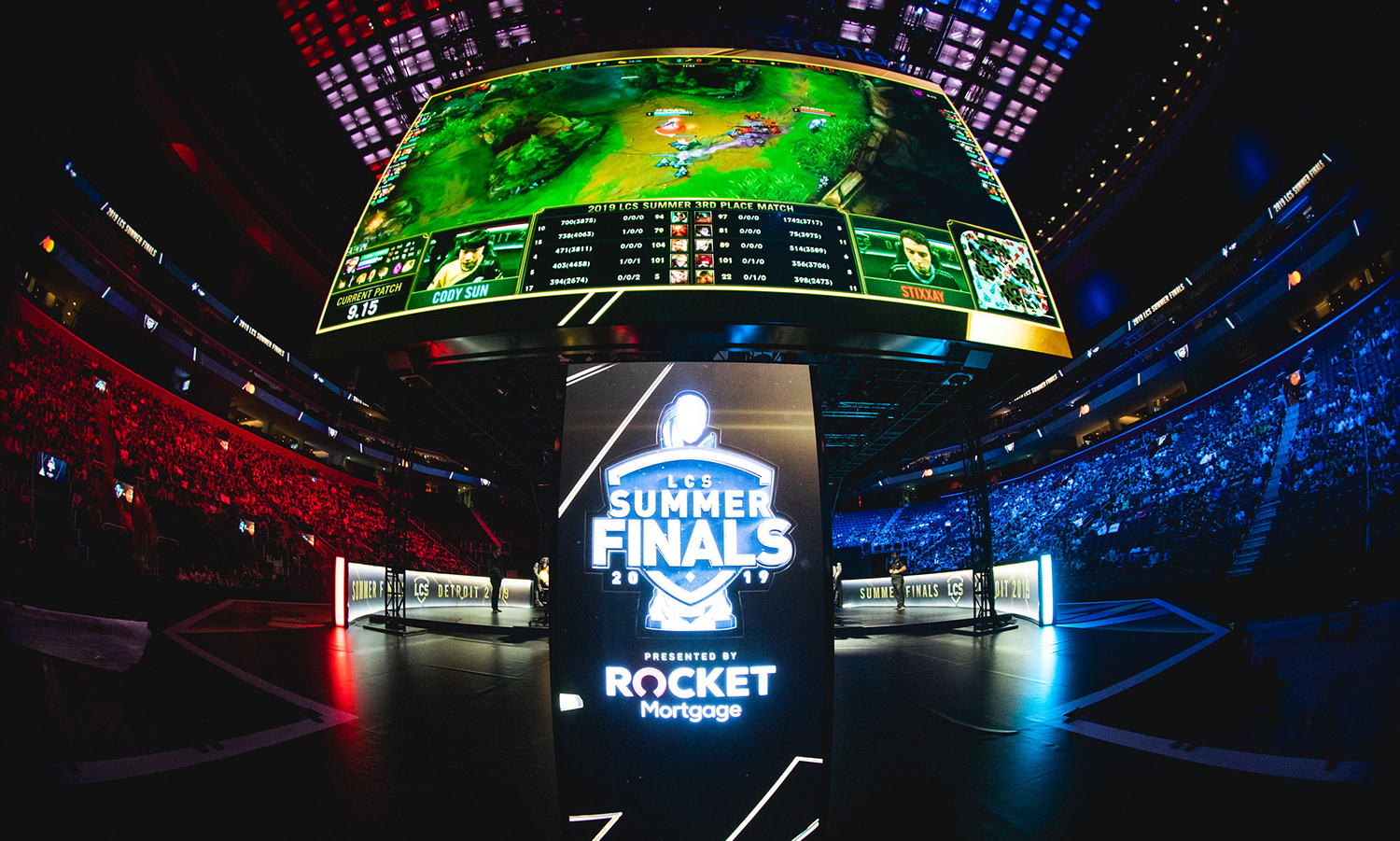
Riot Games used Little Caesars Arena’s massive center-hung videoboard for the LCS Summer Finals (Photo: Colin Young-Wolff/Riot Games)
“Normally, we bring in our own projectors and screens, but we’re very lucky: at this venue, they have an amazing center-hung hi-res LED board that’s larger than any of the screens we normally bring in,” says Lloyd. “That’s very useful for us because, as opposed to a basketball game, where people are coming to watch their game play happen actually on the floor, our game play is virtual. We rely on screens for our main [coverage]. That’s huge for us, coming to a venue that has that already there and has such a nice screen.”
In addition to using the arena’s center-hung videoboard and ribbon displays, Riot also deployed six LED video screens on the stage itself. Although Riot primarily used the in-house lighting system, the team brought in its own PA system in order to have full control of the audio for the event.
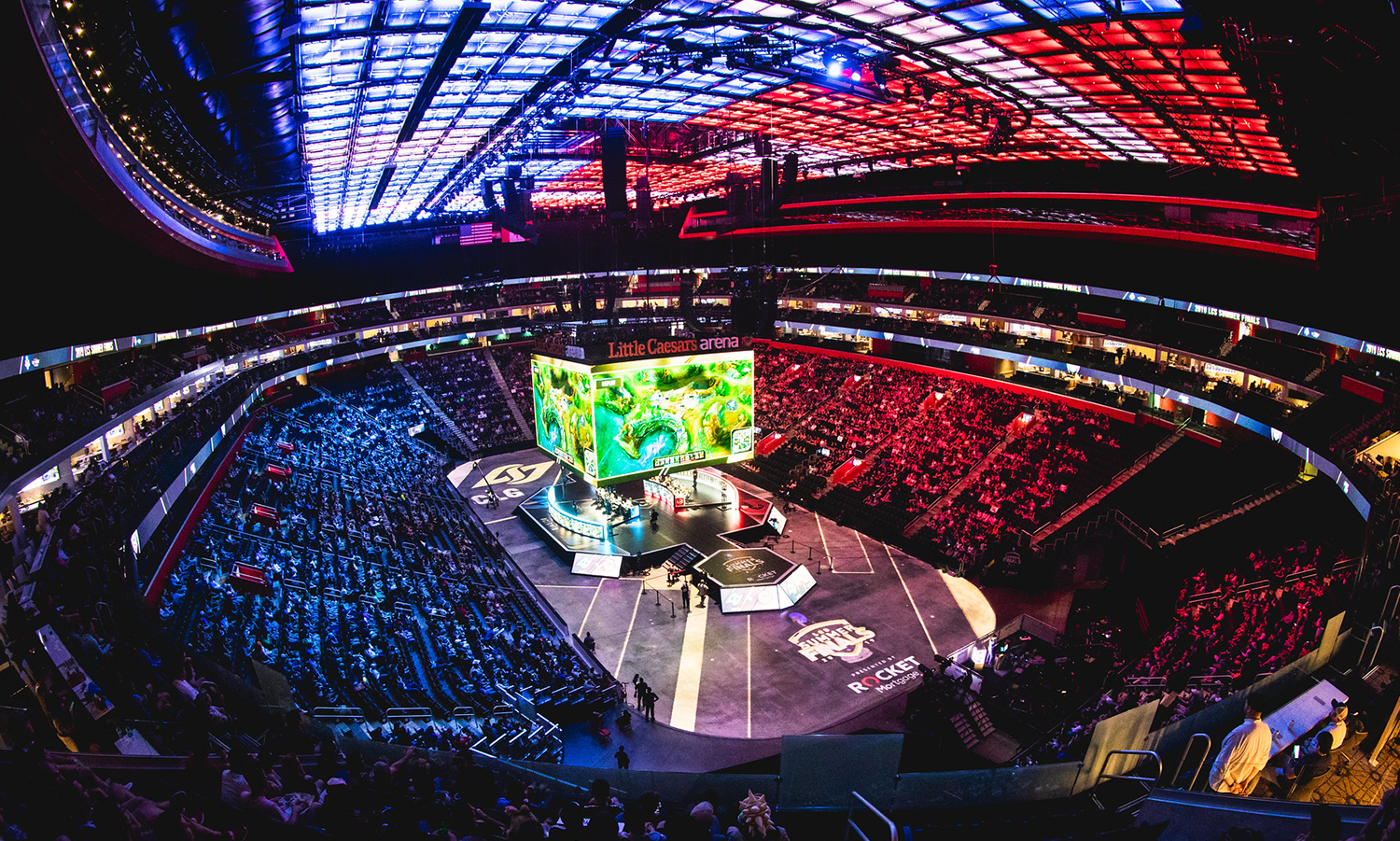
The LCS Summer Finals was a feast for the eyes, featuring 3D projection mapping and PixMob LED bracelets (Photo: Colin Young-Wolff/Riot Games)
Little Caesars Arena, which opened in September 2017, is also equipped with an advanced projection-mapping system that leverages eight projectors to create 3D images displayed on the ice and the basketball court for Red Wings and Pistons games, respectively. Riot deployed the system over the weekend for both the Opening Ceremony and in-game coverage.
“The projection mapping is one of the biggest bets; we’ve never done that before for an LCS Final,” said Riot Games LCS Event Lead Devin Murphy prior to the show. “We’re [using] that both for the Opening Ceremony and for a lot of our in-game call-outs: when someone takes a dragon, the Infernal Drake will land on the floor and breathe fire across the entire floor. We think fans are going to love it.”
In terms of on-air talent, the analyst desk was located on a small stage on the floor inside the arena, while the casters were located in a booth near the press box.
Inside the Production: Riot’s At-Home–Production Model Returns
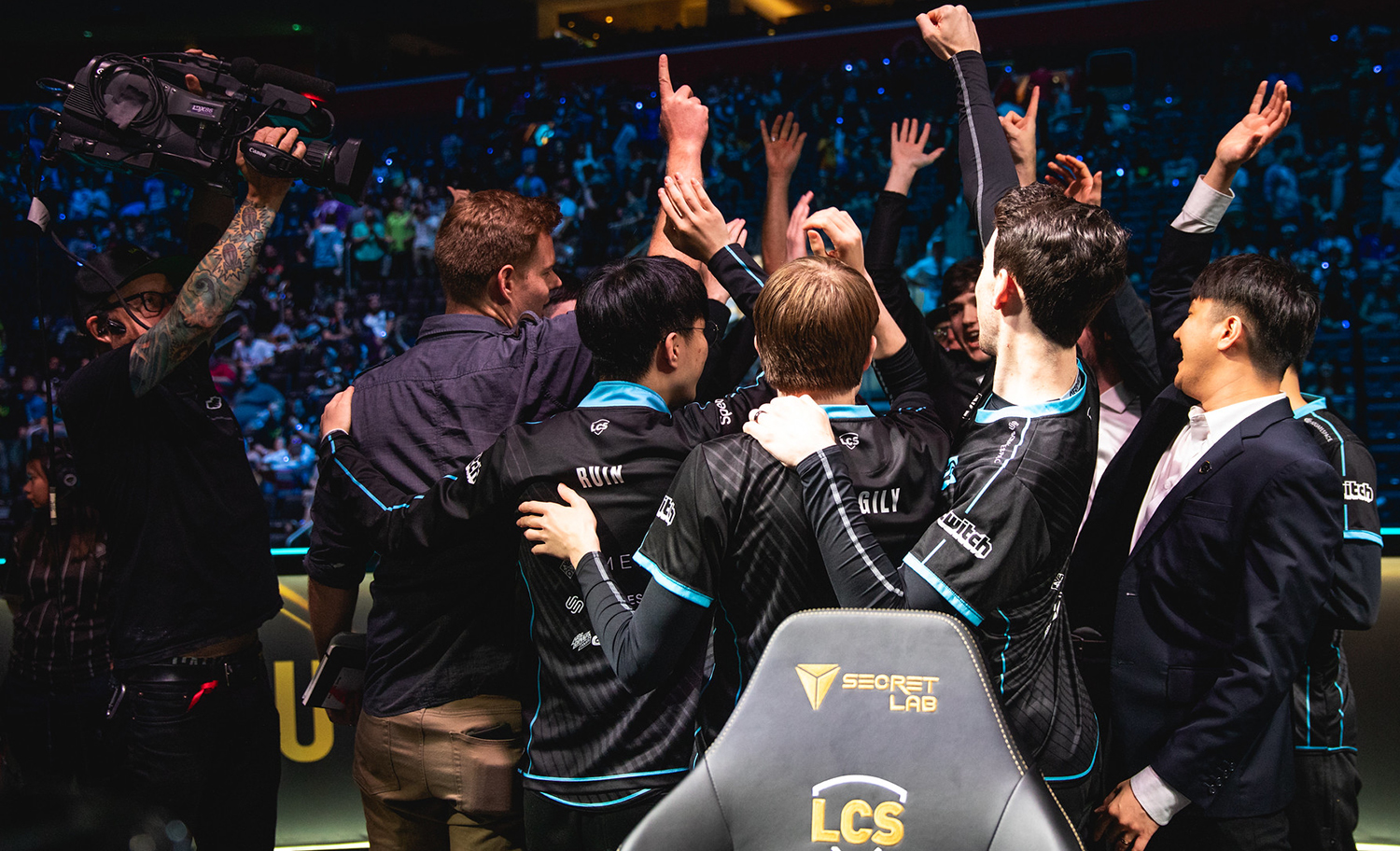
Riot used seven Grass Valley LDX cameras provided by Little Caesars Arena. (Photo: Colin Young-Wolff/Riot Games)
Riot Games uses the at-home–production model for the majority of its events, home-running camera/audio feeds to its studios in L.A. and producing the show out of a control room there (check out SVG’s coverage of the 2019 Mid-Season Invitational and 2018 World Championships for more on this workflow). This model was once again in effect in Detroit along with a small flypack setup deployed inside Little Caesars control room for the handful of production crew onsite.
“We are using our normal [at-home] model for production out of the our normal LCS home control room back in L.A.,” says Lloyd. “Most of the control-room crew is able to be in their usual positions that they are for week over week for the rest of our season. Since we’re using [Little Caesars Arena’s] main center-hung and their screens, we’re also using their screen switcher.”
Riot also used seven of the arena’s Grass Valley LDX cameras for its handheld, jib, and Steadicam positions, as well as various robo and PTZ cameras. The stage also featured POV cameras fixed on each player from Riot.
“It’s about [equal] with what we normally have for cameras, so that worked out quite nicely,” says Lloyd. “We normally do shade cameras and control the robos from home, but, since we’re using so many of their cameras, we’re using their setup at the arena.”
Upping the Entertainment Ante: PixMob Bracelets and Embracing Motown
Riot also distributed PixMob Wristband X2 LED bracelets, which were activated by infrared signals sent from PixMob transmitters. From a lighting console, the PixMob team programed the effects just like any other lighting fixture – sending the commands by DMX to transmitters that then passed on commands to the wristbands.
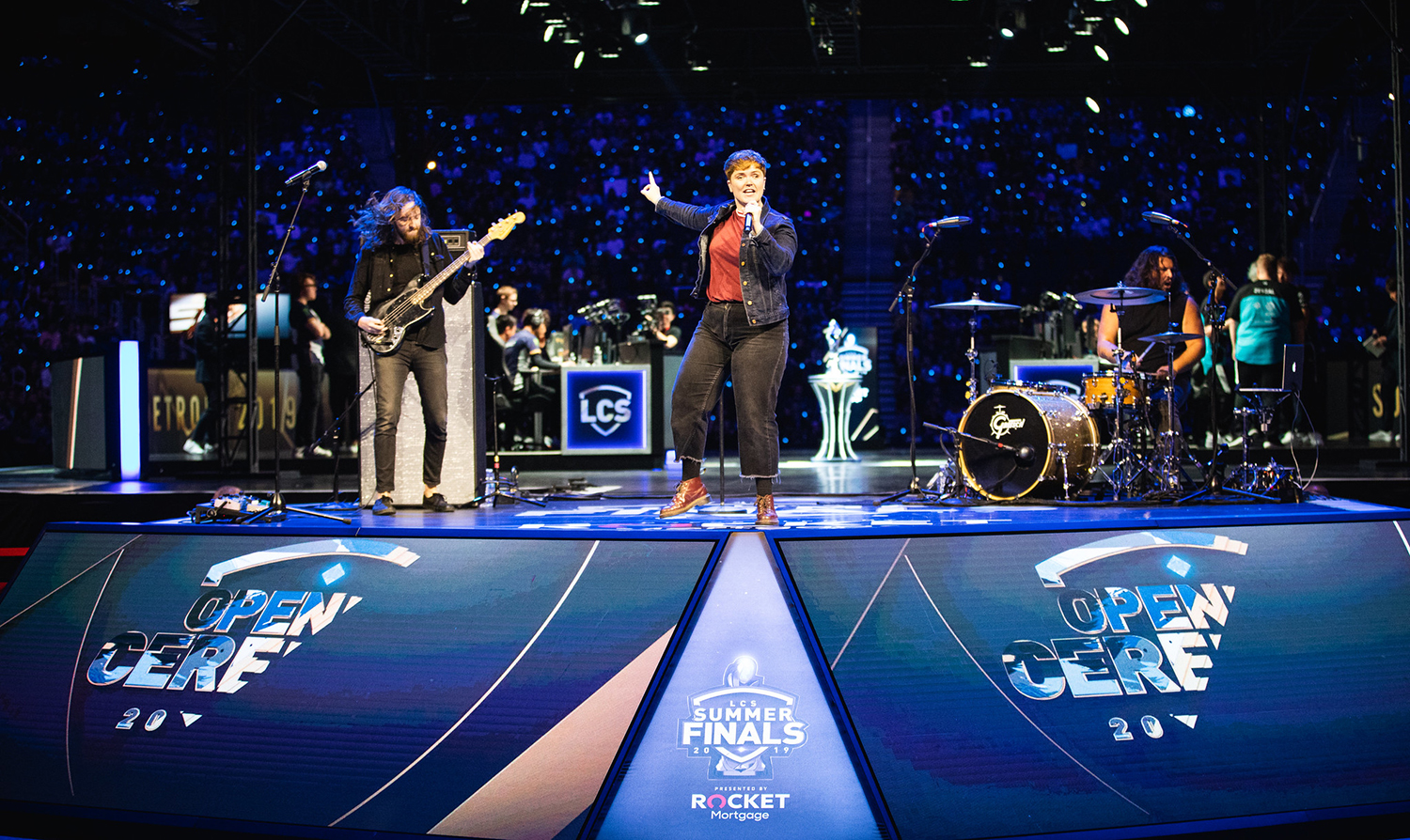
Detroit-based Jax Anderson performed during the LCS Summer Finals Opening Ceremony. (Photo: Colin Young-Wolff/Riot Games)
“The PixMob bracelets are timed up with a lot of the callouts: when there are really big in-game moments, they’re going to reverberate throughout the arena bowl,” said Murphy. “It’s something that we haven’t seen before, as far as how well we can tie in the virtual world with our in-house experience.”
Riot Games is known for rolling out show-stopping elements in its Opening Ceremonies and fan festivals at LoL events, and it did not disappoint in Detroit. Much of Riot’s efforts were focused on customizing these elements for the Detroit community, including a live performance by Detroit-based alt-pop artist Jax Anderson during the Opening Ceremony.
“A lot of the work we’ve been doing locally here is to make the show feel customized to Detroit to make sure that we’re working with our partners on the ground here to develop activations, graphics, and programming that feels authentic and bespoke to the city that’s hosting us,” said Murphy. “We took some inspiration from the RiverWalk and a lot of the street art down there and factored that into our graphics package.”
Correction: A previous version of this story indicated the PixMob LED bracelets use RFID chips. These bracelets actually are activated by infrared signals sent from PixMob transmitters and do not use RFID chips.
